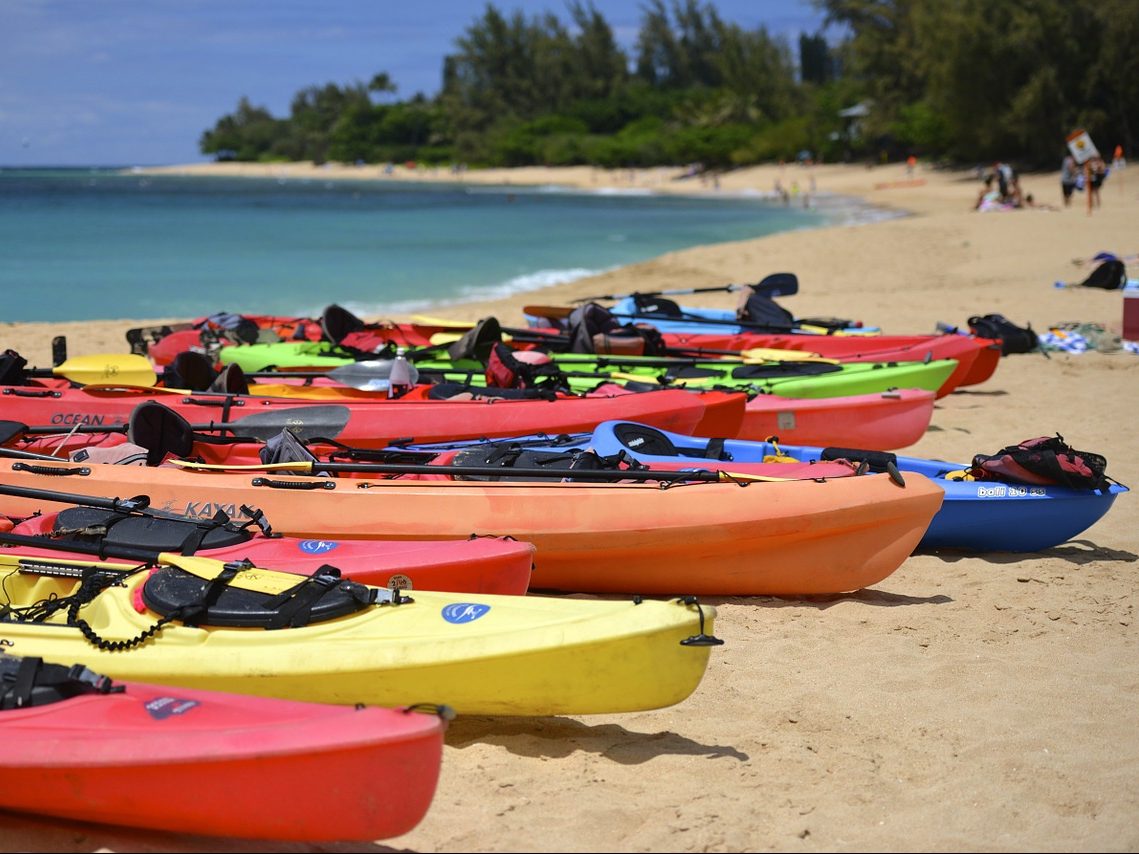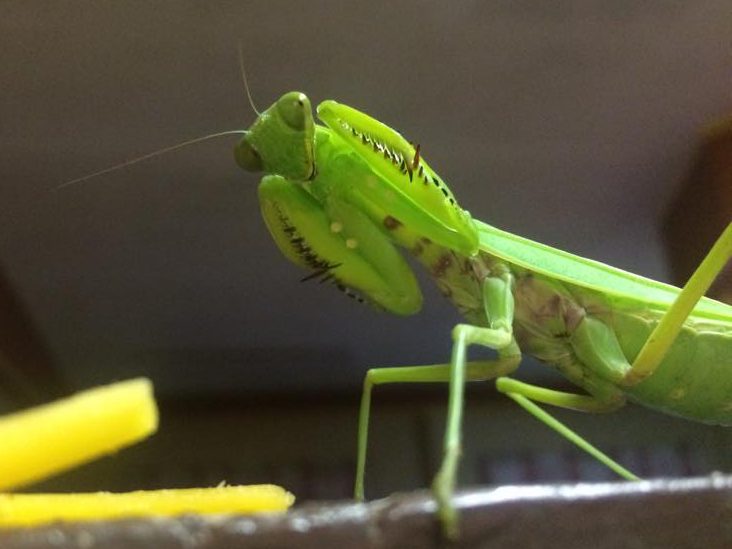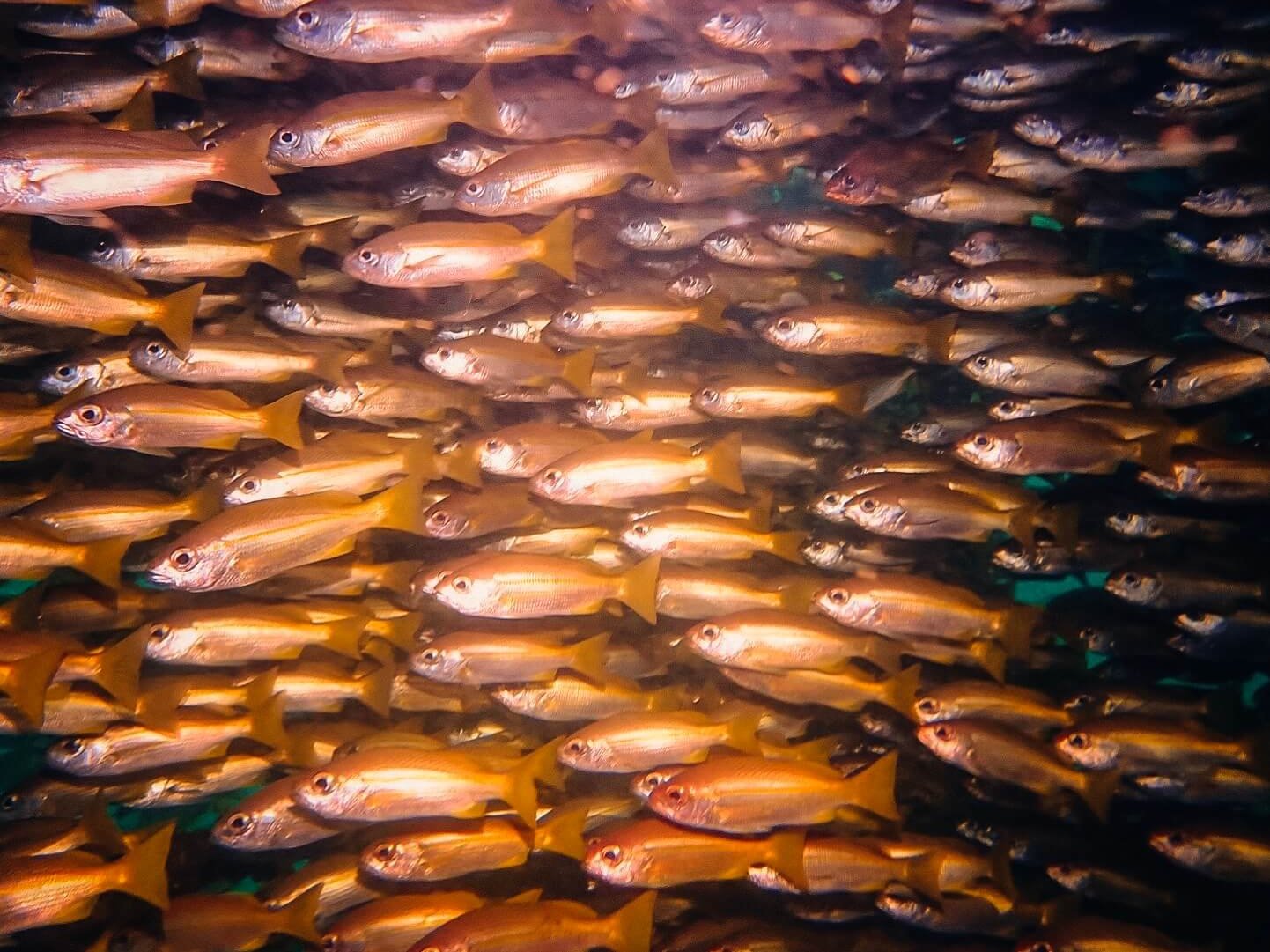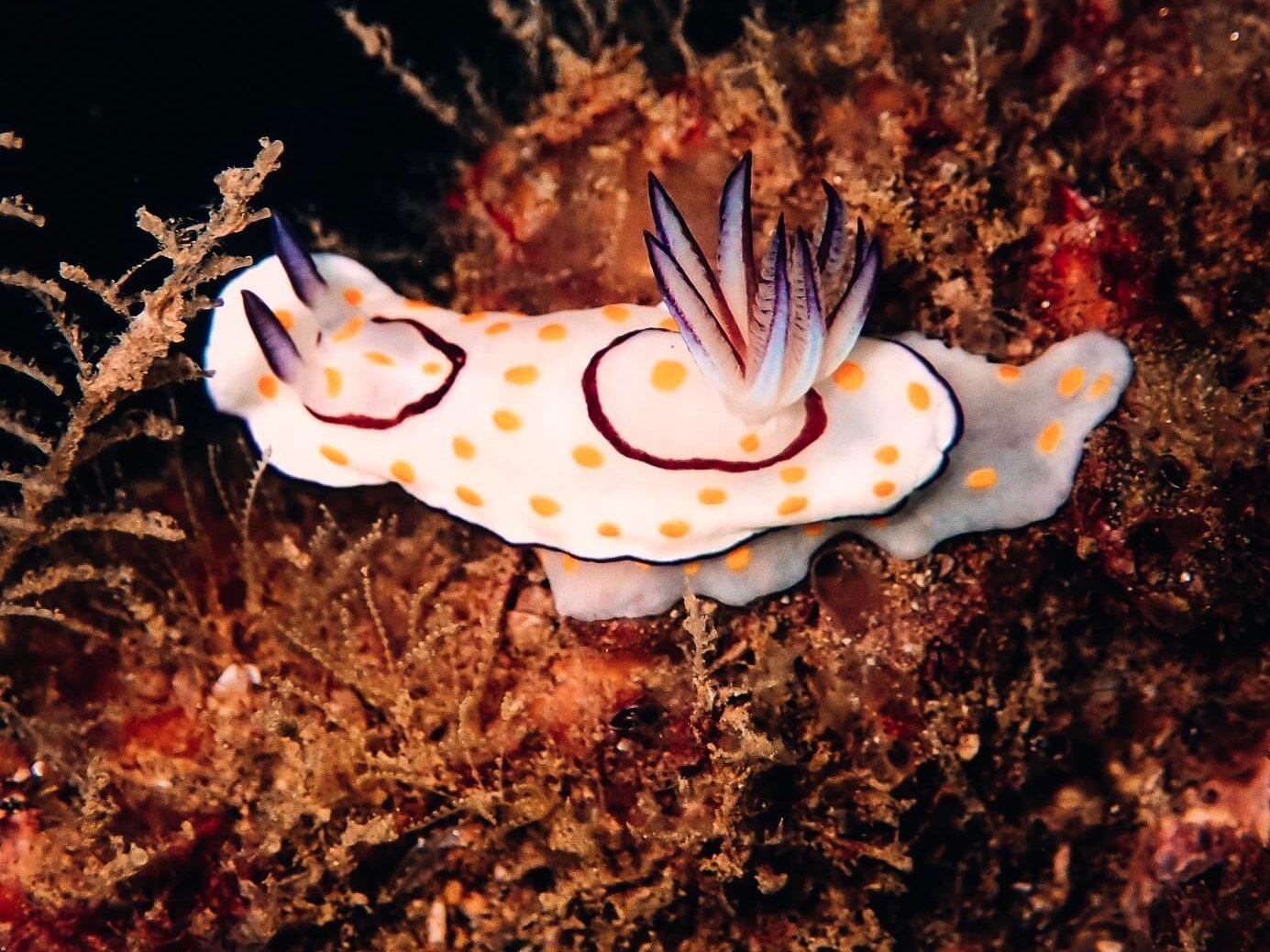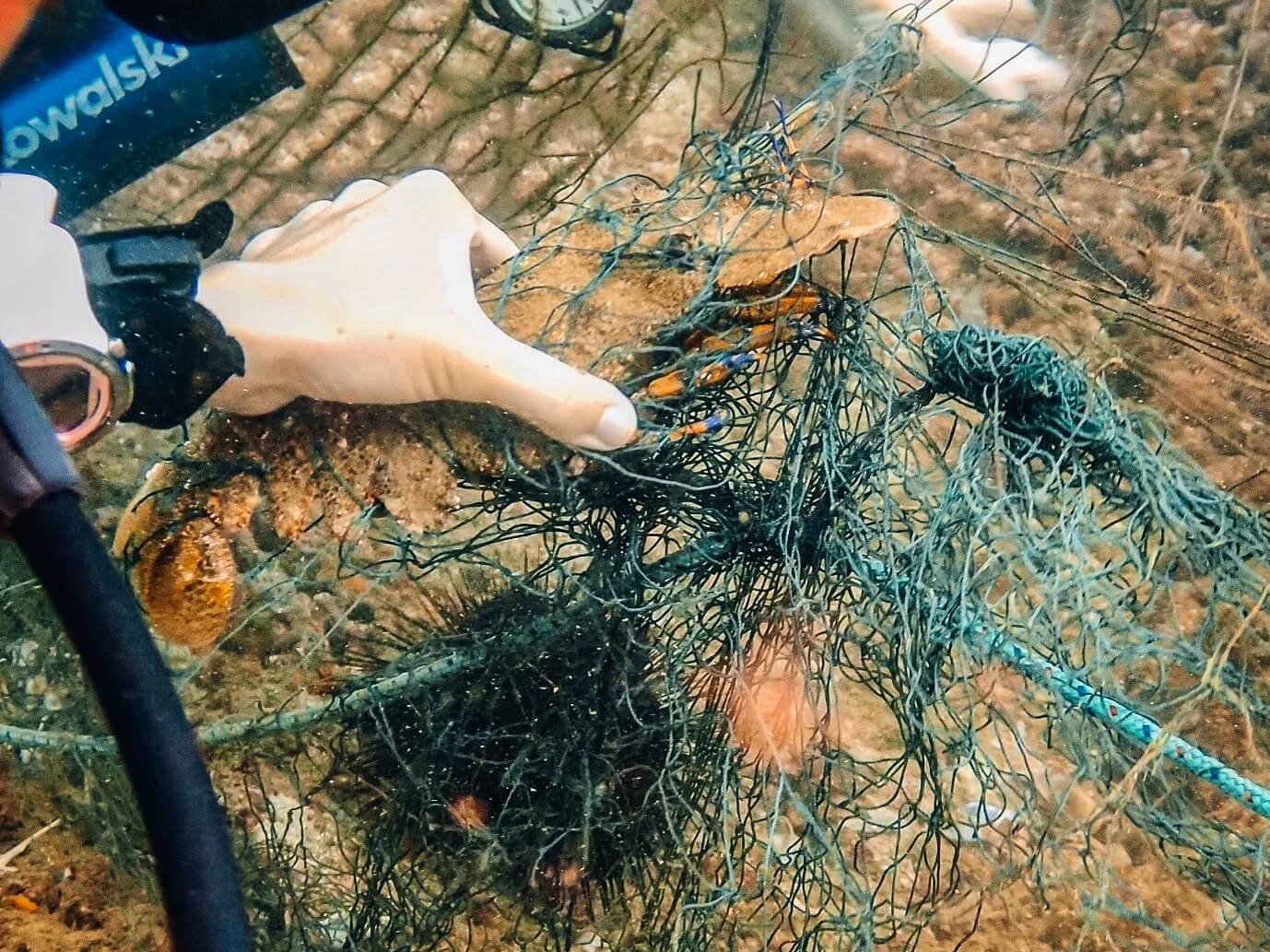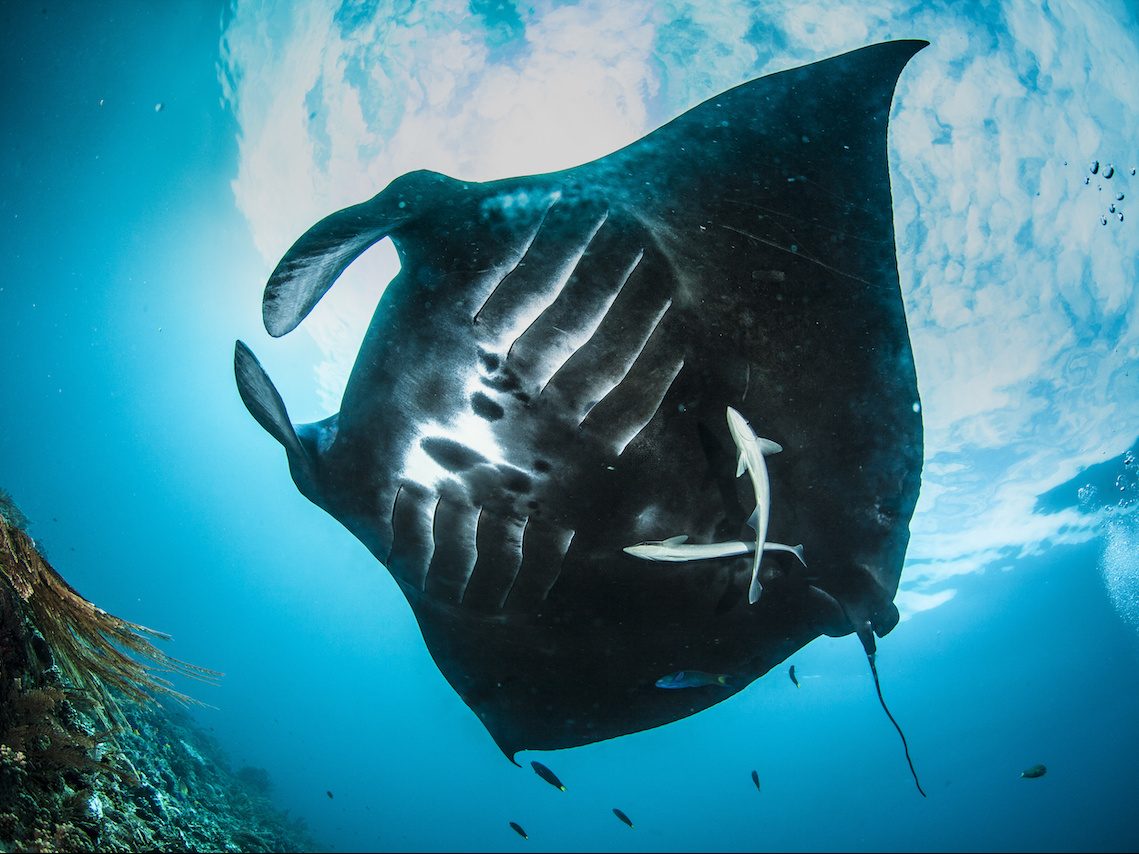
Ouklemedaol = the Palauan word for manta rays.
Yesterday we went diving with Day Dream and for our third dive they brought us to a dive site that they found themselves, and only they know the coordinates to: Secret Stadium.
The boat captain and two of the Japanese staff hovered around the GPS as we drove through the stormy seas along the outer reef on the east coast. When we reached the proper coordinates, one of the staff jumped in with a snorkel to go find the morning line, unmarked by a buoy so as to keep the sight hidden and secret. He immediately swam off in one direction, seeing what he was looking for off in the distance. How he saw the line in such low visibility I have no idea, but several moments later we were moored up and ready to jump in.
Secret Stadium in one of many cleaning stations scattered around Palau, a sort of fish spa for fish to go to get their skin, gills, and teeth cleaned by various parasitic copepods. Small cleaner fish do the cleaning, and large animals like mantas show up every day to spend several hours getting squeaky clean. The most well known cleaning station here is German Channel, but due to swarms of tourists showing up on a daily basis, fewer and fewer mantas have been observed showing up. Hence the desire to keep newly found stations a secret.
Of course the ocean is wild and unpredictable, so when someone says you might see mantas, there is never a guarantee. I have been to German Channel twice now and saw nothing but sand and herds of Chinese divers dragging their fins along the coral. No mantas. So to be honest I expected to be sitting in a sand patch for 40 minutes.
We descended onto a large mound of coral, several meters from which there was a smaller mound of coral, the cleaning station. Our divemaster pointed out the station to us, I turned my head, and in the low visibility I saw the fuzzy outline of a massive manta ray. My heart skipped a beat and I wondered if my eyes were deceiving me because I just wanted to see a manta ray that badly. I see mirages in low visibility water all the time. But it swam closer, into focus and it was really there. A beautiful manta ray. It swam with such majestic grace I still couldn’t believe it was real.
There were two that we watched circle the cleaning station for the entire 40-minute dive. One was massive, the full 5-meter (16-foot) wingspan that reef mantas grow to be. The second was only a few feet smaller. One would approach from the distance, so foggy you weren’t sure if it was actually there, then glide closer into view with barely a flap of its wings until every gill and marking was crystal clear. It would make a graceful circle around the station and then disappear again off into the distance, and the second ray would repeat the same dance.
Manta rays have what are called cephalic lobes/fins/flaps in front of their mouths. They curl these up when cruising, and then open them into the shape of a mouth to help funnel plankton into their mouths when feeding.
Manta rays have the largest brain relative to body size out of all fish species (including all sharks and rays).
Relatively little is known about these large fish, but it is believed that they live to be anywhere between 50 and 100 years old.
Contrary to popular belief, mantas are not dangerous and do not have a singer like sting rays do.
All too soon our 40 minutes were up and our backup guide went around trying to get everyone’s attention to ascend. The mantas stayed at the cleaning station, not caring that we had to say goodbye (in fact they were probably pretty happy about it). Back on the boat all language barriers were forgotten as we all talked excitedly about what had just happened. Everyone was smiling ear to ear, and me especially as that was my first encounter with manta rays.


